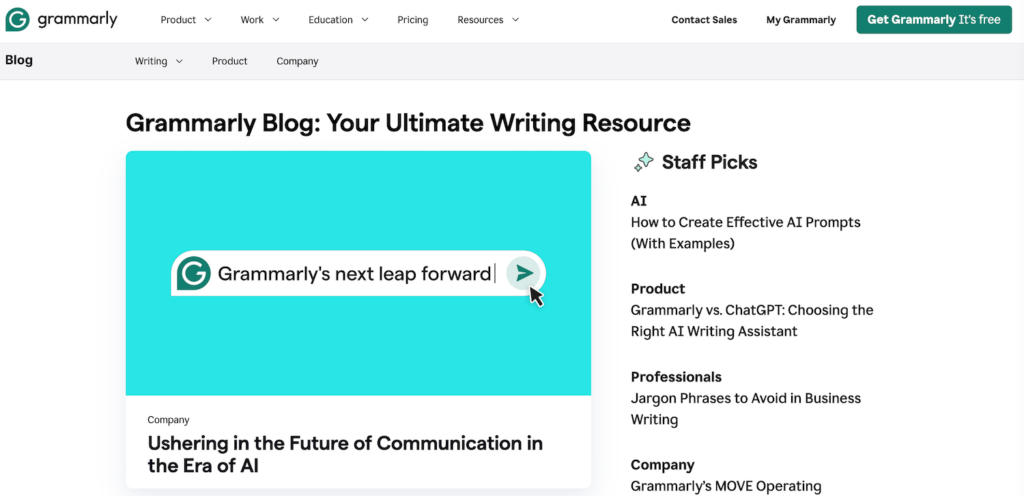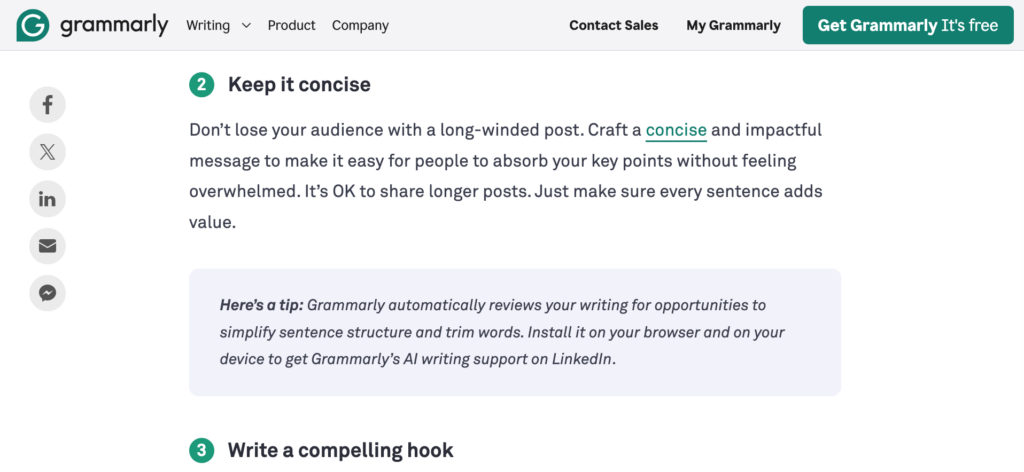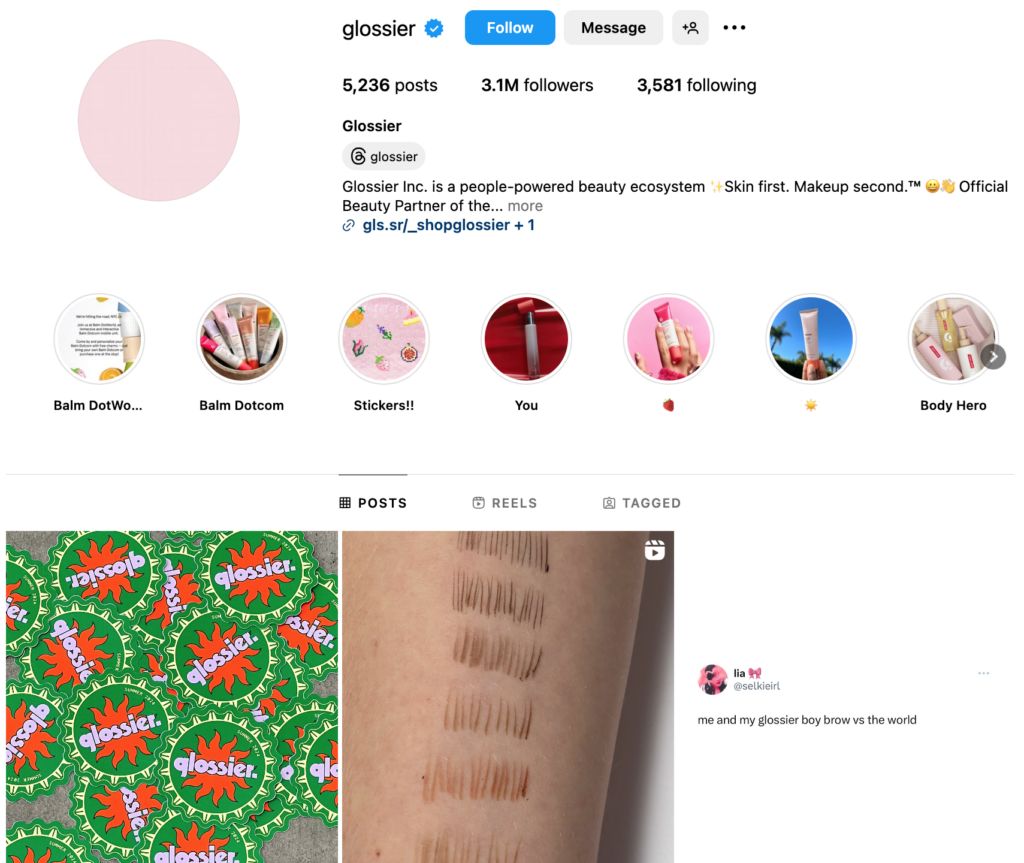Table of Contents
- Home
- »
- Content Marketing
- »
- Content Marketing Conversion: Improve Your Conversion Rate
-
Wordbrew
- 8 minutes read time
Content Marketing Conversion: Improve Your Conversion Rate
- Home
- »
- Content Marketing
- »
- Content Marketing Conversion: Improve Your Conversion Rate
Content Marketing Conversion: Improve Your Conversion Rate
Table of Contents

After years as both a content writer and marketer, I’ve learned that knowing how to create content that converts isn’t just a nice-to-have skill—it’s essential if you want to drive conversions and boost your online presence.
Let me share a quick story with you. A while back, I worked with a small business (with fantastic products) who needed help establishing a solid online presence.
Although their website was receiving decent traffic, their conversion rate was extremely low.
After reviewing their content strategy, we realized that while they were producing great content, it wasn’t conversion content—ie., it wasn’t guiding their audience towards taking action.
Content marketing conversion works: according to HubSpot’s 2024 State of Marketing report, nearly 50% of buyers read a company’s blog while making purchase decisions.
That’s why your content should have a clear purpose and drive conversions.
In this blog, I’ll explain the basics behind content marketing conversion, why it’s so important, and some actionable strategies for making your content more effective.
TL;DR: Content marketing conversion
- In marketing, conversion turns content readers into customers or leads through purchases, sign-ups, and form submissions.
- Content marketing conversion guides audiences through awareness, interest, desire, and action stages.
- Strategies for creating high-converting content include knowing your audience, crafting compelling value propositions, and leveraging social proof.
- To improve conversion rates, track key metrics, use analytics tools, analyze data, and optimize based on insights.
What is conversion in marketing?
Simply put, a conversion in marketing is the process of turning your content readers into customers or leads.
When your audience engages with your content and takes a desired action—like signing up for a newsletter, downloading a whitepaper, or making a purchase—that’s a conversion.
Here are a few examples:
- Purchase: Say you run an e-commerce store and launch a promotional campaign for a new product. A customer clicks on the ad, visits the product page, and completes a purchase. That’s a conversion.
- Sign-up: Your business hosts a free webinar on your product’s benefits. Users who sign up for the webinar are counted as conversions because they’ve taken a step toward engagement with your brand.
- Form submission: If you’re a real estate agency with a contact form for potential buyers to request more information about listings, each form submission is a conversion since it’s a potential lead.
- Download: Your marketing firm offers a free eBook on the latest industry trends. Users who download the eBook are conversions because they’ve shown interest in your expertise.
- Click-through: In some campaigns, especially in email marketing or PPC advertising, a click-through to a specific landing page is counted as a conversion, as it represents user engagement.
- Social media engagement: Actions such as likes, shares, comments, or follows can also be considered conversions. For example, say your company runs a social media contest asking users to share a post and tag friends. Each share and tag is a conversion because it expands your brand’s reach and engagement.
How does content marketing conversion work?
Think of your content as a bridge between your audience and business goals. It’s a balance between:
- Understanding your audience’s needs.
- Creating helpful content that delivers real value.
- Guiding them through the marketing funnel.
According to 2023 research from the Content Marketing Institute:
- 58% of B2B marketers say content marketing helped them generate sales/revenue in the last 12 months, and
- 76% of B2B marketers reported content marketing helped them meet demand/lead generation goals.
Here’s a breakdown:
- Awareness: At this stage, your content should attract attention and draw people in. This content includes blog posts, social media updates, and videos highlighting common problems and introducing your brand.
- Interest: Now that you have their attention, you need to keep them interested. Provide valuable information and show how your product or service can solve their problems. Case studies, how-to guides, and webinars are great for this.
- Desire: Your content should create a strong desire for your product. Highlight your selling points and use customer testimonials and success stories to build trust.
- Action: Finally, guide your audience to take action, like making a purchase, signing up for a free trial, or contacting your sales team. Your call-to-action (CTA) should be clear and compelling, making it easy for your audience to convert.
Pro tip: With Wordbrew’s hybrid content creation platform, we can help you craft this bridge effectively. By collaborating with our team of subject matter experts, you can create highly targeted content that leads to conversions, making your content marketing efforts more efficient and cost-effective.
Focusing on creating content that converts guides your audience through these stages and improves your conversion rates.
How to create content that converts
Here are 8 strategies to help you create high-converting content:
1. Know your target audience
Understanding who you’re writing for is the foundation of effective content marketing. Start with:
- Researching your target audience to uncover their needs, preferences, and pain points.
- Using tools like surveys, social media insights, and customer feedback to gather more information.
When you know your audience well, you can create customized conversion content that resonates and prompts them to take action.
2. Use compelling value propositions
Your value proposition should clearly spell out the benefits of your product or service. Address your audience’s pain points and explain why they should choose you over competitors.
Include this message across all your content, including landing pages, blog posts, and social media updates.
3. Optimize for SEO
By integrating SEO conversion content techniques, such as:
- Using relevant keywords,
- Optimizing meta tags, and
- Creating high-quality content that attracts backlinks,
you can attract more traffic to your site and increase your conversion rates.
High search rankings drive more traffic to your site, which can lead to higher conversions.
Pro tip: SEO optimization can be a time-consuming (and confusing!) task. Wordbrew’s SEO experts can optimize your content to improve search engine rankings and increase visibility, driving more qualified leads to your site.
4. Add strong calls-to-action (CTAs)
Your CTAs guide your audience toward conversion. They should be clear, compelling, and action-oriented.
Whether it’s “Download Now,” “Sign Up Today,” or “Get Started,” your CTAs should create a sense of urgency and provide a clear path to the next step.
5. Incorporate social proof
You’ve probably heard it before: People want to buy from people, not brands. Social proof builds trust and credibility, making it easier for your audience to decide to take action.
- Add customer testimonials, reviews, and case studies into your content.
- Highlight success stories and showcase how your product or service has helped others achieve their goals.
6. Repurpose valuable content across channels
The key to effective content marketing is to create and repurpose content across different channels, like social media, email marketing, and your website.
- Use blog posts to attract and educate,
- Social media to engage and build a community, and
- Email marketing to nurture leads and drive conversions.
It’s all about creating valuable connections!
Pro tip: Wordbrew can help you repurpose and optimize your content across different platforms. We can help you craft messages tailored for each channel–social media, email, your website, and more–expanding your content’s reach.
7. Personalize your content
Using data and insights to personalize your content can significantly increase your content marketing conversion rate. When you send personalized emails, recommendations, and targeted content, it can make your audience feel valued and understood, increasing the likelihood of conversion.
8. Test and optimize
The best way to learn what works best is by testing different content elements and strategies. A/B testing can help you determine the most effective headlines, CTAs, and content formats.
Use analytics tools to track performance and make data-driven decisions to optimize your conversion rate.
Learn more about how AI content optimization tools can save you time and improve content performance.
Examples of great content marketing conversion
Here are a few real-world examples from companies that have nailed content marketing conversion.

Grammarly’s content marketing strategy includes a comprehensive blog that addresses various aspects of writing, productivity, and communication. The blog offers actionable tips and insights that attract a broad audience.

By using calls to action for its writing assistant tool within its content (like this one on the dos and don’ts of LinkedIn posts), Grammarly converts blog readers into users of its premium services.

Glossier’s Instagram account is a masterclass in leveraging social media for content marketing conversion. Glossier shares brand and user-generated content that showcases its products and engages its customer base, leading to high engagement and conversions on its site.

Zendesk uses a great mix of blogs, videos, and help center content to create engaging and relatable content marketing.
Zendesk’s help center provides guides, best practices, how-tos and videos to make it easy for customers to onboard and use their products.
These videos and blogs also build brand awareness and help convert viewers into customers by providing valuable and entertaining content that resonates with their target audience.
How to improve your conversion rate
Creating content that converts is just the beginning. You need to measure its effectiveness and adjust your strategies for ongoing success. Here’s how you can do that:
1. Track key metrics
You’ll need to track key metrics to understand how your content marketing conversion efforts are working. Here are some essential metrics to monitor:
- Conversion rate: The percentage of visitors who take the desired action.
- Bounce rate: The percentage of visitors who leave your site after viewing only one page.
- Average time on page: How long visitors stay on your page, indicating engagement.
- Click-through rate (CTR): The percentage of people who click on your CTAs.
- Lead generation: The number of leads generated from your content.
By tracking and analyzing conversions, you can get a better handle on customer behavior, fine-tune your marketing strategies, and ultimately boost sales and grow your business.
2. Use analytics tools
You can collect data using tools like Google Analytics, HubSpot, and other content marketing platforms. These tools provide valuable insights into user behavior, helping you understand what’s working well and what needs improvement.
3. Analyze your data
Once you have your data, look closely for trends and patterns. Find out what makes successful content stand out and understand why some content could be doing better.
4. A/B testing
A/B testing, or split testing, involves comparing two versions of a web page or piece of content to see which performs better.
You can test elements like headlines, CTA buttons, images, and content formats to figure out what resonates most with your audience. For example, you can try different wording in your CTAs to see which one gets more clicks.
Have fun experimenting and finding out what works best for your audience!
5. Gather feedback
Ask for feedback directly from your audience to learn their needs and preferences. Surveys, comments, and direct interactions can give you valuable insights you might not find through data alone.
6. Optimize based on insights
Use the valuable insights from your data analysis and feedback to make informed adjustments to your content strategy. You can tweak your messaging, redesign your CTAs, or shift your focus to different topics or formats.
7. Continuous improvement
Content marketing conversion is an ongoing process. Keep monitoring your performance, trying new ideas, and refining your approach. Also, stay updated with industry trends and best practices to keep your strategy effective.
8. Align with overall business goals
Remember to check in on your content conversion strategy regularly to make sure it’s helping you reach your goals and get the results you want. By measuring and improving your content marketing conversion rates, you can make your content work even better for your business and keep it growing sustainably.
FAQs
What is a good conversion rate for content marketing?
- A good conversion rate for content marketing typically falls between 2% and 5% across all industries.
- If 6% of your website visitors engage with your content by signing up for a mailing list or making a purchase, that’s considered very effective.
- Keep in mind that conversion rates can vary by industry, so it’s important to compare your numbers to the standards for your specific industry.
Conclusion
Content marketing conversion is not just about creating content; it’s about creating content that resonates with your audience and prompts action. Conversions drive the success of your marketing efforts—they provide tangible proof that your strategies are working and help you measure your return on investment.
At Wordbrew, we specialize in helping businesses like yours create high-converting content that drives results. Our team of experts craft personalized content that can increase your conversion rates.
Contact Wordbrew today and discover how we can help you turn your content into a powerful tool for business growth.